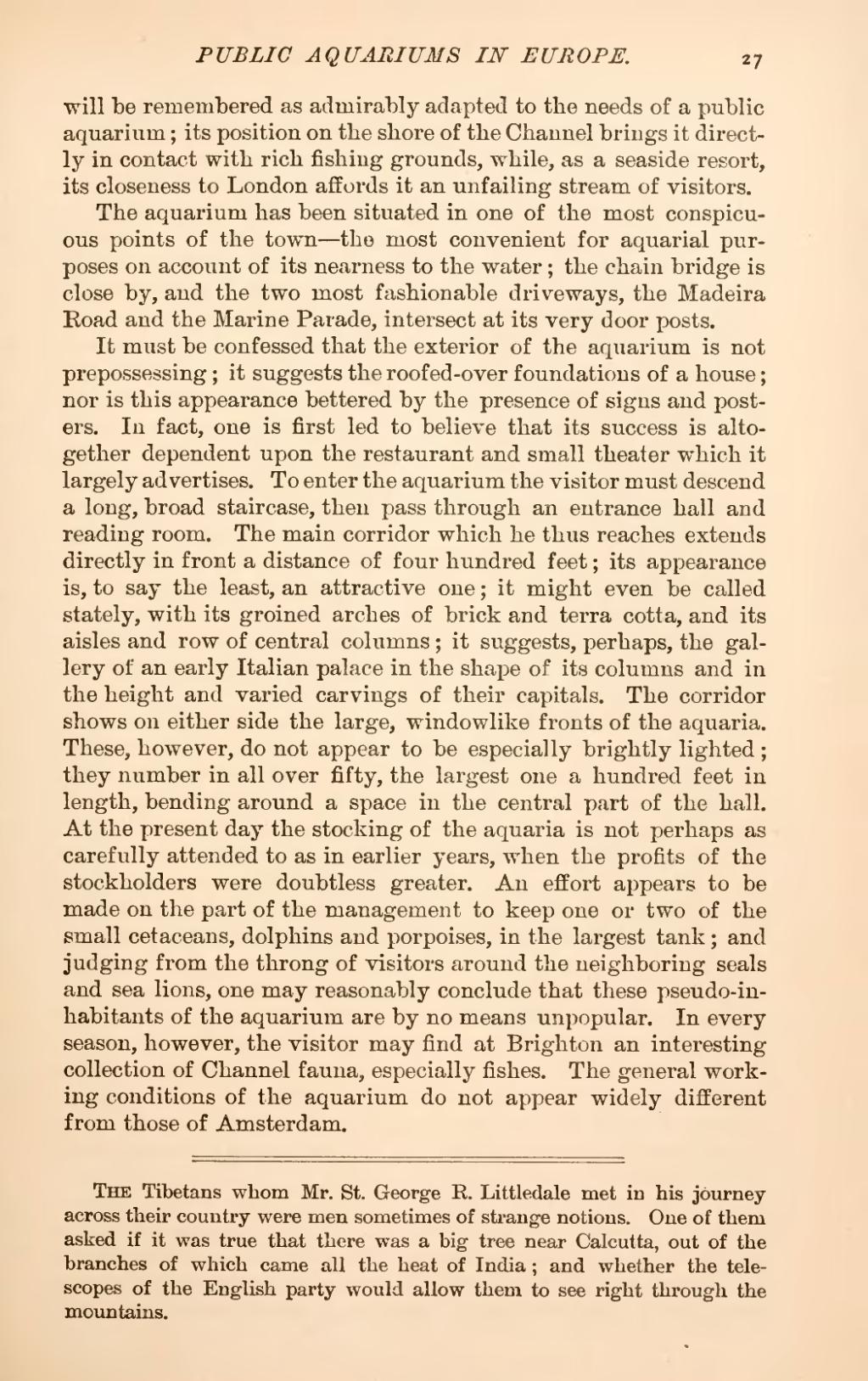will be remembered as admirably adapted to the needs of a public aquarium; its position on the shore of the Channel brings it directly in contact with rich fishing grounds, while, as a seaside resort, its closeness to London affords it an unfailing stream of visitors.
The aquarium has been situated in one of the most conspicuous points of the town—the most convenient for aquarial purposes on account of its nearness to the water; the chain bridge is close by, and the two most fashionable driveways, the Madeira Road and the Marine Parade, intersect at its very door posts.
It must be confessed that the exterior of the aquarium is not prepossessing; it suggests the roofed-over foundations of a house; nor is this appearance bettered by the presence of signs and posters. In fact, one is first led to believe that its success is altogether dependent upon the restaurant and small theater which it largely advertises. To enter the aquarium the visitor must descend a long, broad staircase, then pass through an entrance hall and reading room. The main corridor which he thus reaches extends directly in front a distance of four hundred feet; its appearance is, to say the least, an attractive one; it might even be called stately, with its groined arches of brick and terra cotta, and its aisles and row of central columns; it suggests, perhaps, the gallery of an early Italian palace in the shape of its columns and in the height and varied carvings of their capitals. The corridor shows on either side the large, windowlike fronts of the aquaria. These, however, do not appear to be especially brightly lighted; they number in all over fifty, the largest one a hundred feet in length, bending around a space in the central part of the hall. At the present day the stocking of the aquaria is not perhaps as carefully attended to as in earlier years, when the profits of the stockholders were doubtless greater. An effort appears to be made on the part of the management to keep one or two of the small cetaceans, dolphins and porpoises, in the largest tank; and judging from the throng of visitors around the neighboring seals and sea lions, one may reasonably conclude that these pseudo-inhabitants of the aquarium are by no means unpopular. In every season, however, the visitor may find at Brighton an interesting collection of Channel fauna, especially fishes. The general working conditions of the aquarium do not appear widely different from those of Amsterdam.
